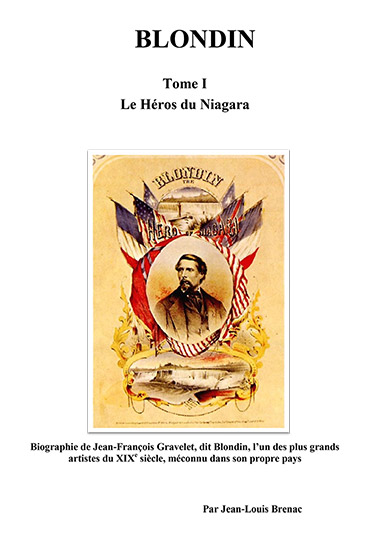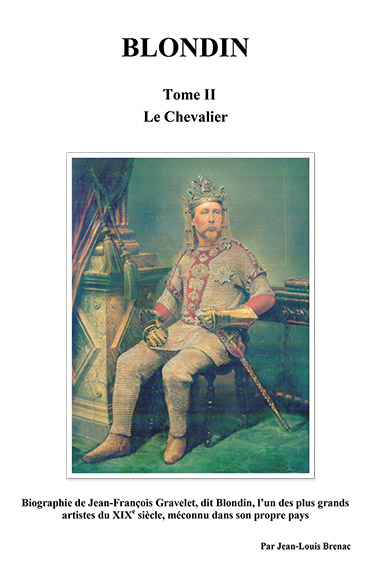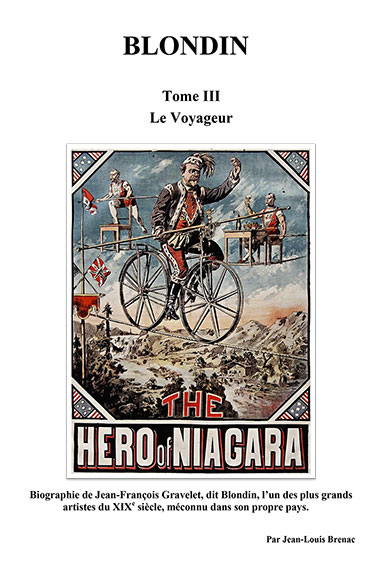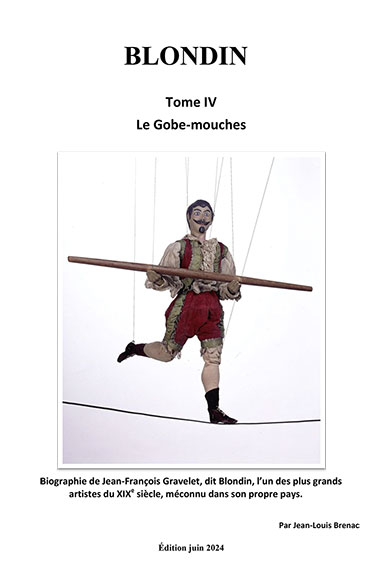Blondin
by Jean-Louis Brenac
Jean-Louis Brenac’s monumental four-volume biography offers an in-depth look at the life and legacy of the legendary tightrope walker.
Each volume explores a different chapter of Blondin’s extraordinary journey, combining meticulous research with compelling storytelling.

The Hero of Niagara
Volume I
(1824–1861)
Blondin, self-styled “Hero of Niagara,” was born on 28 February 1824 into a family of acrobats and toured France from childhood, mastering extraordinary balance.
This volume follows his early career, first marriage, daring move to America, legendary 1859–1860 Niagara crossings and concludes as he departs for London on the eve of the Civil War.
Blondin, who gave himself the title “Hero of Niagara,” was born on 28 February 1824 into a family of acrobats. As a child, he travelled across France with his tightrope walking parents, developing extraordinary balance and precision..
This volume traces his early stage appearances, his first marriage, and his bold decision to leave his family to try his luck in America. It also follows his tours in the British and Dutch East Indies, culminating in a dramatic shipwreck en route to Australia.
There, he performed with the Ravel and Martinetti troupes, refined his art and remarried. His fame exploded thanks to his legendary crossings of Niagara in 1859 and 1860.
The volume concludes as he leaves America for London on the eve of the Civil War.

The Knight
Volume II
(1861–1872)
This volume traces Blondin’s triumphant return to Europe, beginning with his celebrated debut at London’s Crystal Palace and continuing through his wildly successful tours across the British Isles. His fame spread rapidly, drawing huge crowds throughout France, Italy, Germany and Russia.
The title The Knight — which Blondin valued above all others — was bestowed during his second tour of Spain, when the Regent of the Kingdom awarded him the Order of Isabella the Catholic. These were Blondin’s golden years: feted by royalty, followed closely by the press, and admired by vast audiences who gathered in their tens of thousands to witness his grace, poise and extraordinary mastery of the wire.

The Traveler
Volume III
(1873–1877)
This volume follows Blondin at his most adventurous, journeying across continents in pursuit of ever-wider acclaim. It begins with his tours of the British and Dutch Indies, including a dramatic shipwreck on the way to Australia.
After returning to London to reunite with his American family, Blondin embarked on an extraordinary global tour with them, performing across Australia, New Zealand, California, Peru, Chile, Uruguay, Argentina (via Cape Horn) and finally Brazil. Through vivid detail, Brénac captures the rigours of nineteenth-century travel and the unwavering ambition of a man who treated the entire world as his stage.

The Gullible
Volume IV
(1878–1897)
The final volume traces Blondin’s twilight years, a period of both triumph and disillusion. It opens with his acclaimed return to the stage at the Palais de l’Industrie in Paris, followed soon after by the devastating financial fraud he suffered during the 1879 Universal Exposition, which left him virtually ruined.
Despite these hardships, Blondin persevered. In 1888, he made a final journey to the United States, culminating in a quiet pilgrimage to Niagara Falls, the scene of his greatest triumph. After the death of his American wife, he married again and remained professionally active, even as he lost his sight to diabetes. He died in London on 22 February 1897, six days before his seventy-third birthday, leaving behind a legacy as enduring as the wire he once walked.
The biography has also received high praise from Philippe Petit, the world-renowned tightrope walker, who wrote on 10 May 2024:
"Now that I have just read, devoured, I confess, the immense work of detective, spy, journalist, chronicler, historian, and author, that the great master chef Jean-Louis Brenac has amassed in fifteen years of passionate labour, I can declare that he is inviting us to a royal feast."
